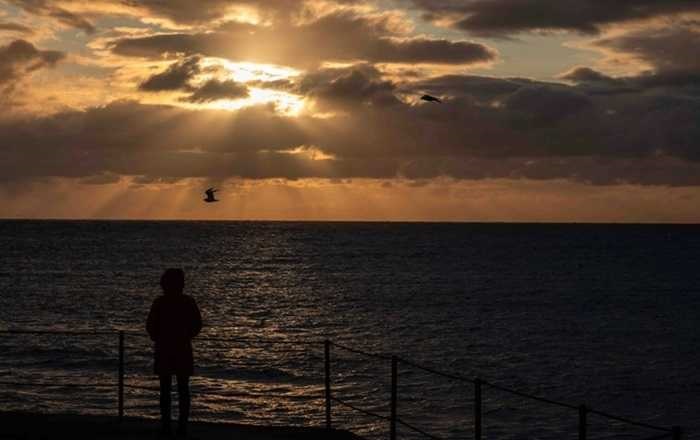
Tilos
Tilos is one of the smallest islands in the Dodecanese and is located between Rhodes and Kos. The island is characterized by tall mountain ranges and fertile coastal plains. It has steep cliffs but also features large sandy beaches, creating a diverse natural environment.
History of Tilos
On the island, significant paleontological findings and dwarf elephant bones dating back to the Mesolithic era have been discovered in the Harkadio Cave. In the 5th century, Tilos became a member of the First Athenian Alliance, as indicated by tax records that mention its name. However, in the 4th century, the island was independent, as confirmed by inscriptions and circulating coins. From the mid-3rd century until the Roman period, it belonged to the powerful Rhodian state.
During the Byzantine period, it was an administrative division of the Theme of Samos and ecclesiastically subordinate to the Metropolitan of Rhodes. The Knights Hospitaller occupied Tilos in 1309 and maintained its autonomy while reinforcing its defense through the construction or repair of castles. Security and economic prosperity led to significant artistic activity, particularly in ecclesiastical iconography. The Turks launched their first attack on Tilos in 1322 and captured it in 1522. After the Turkish rule, Italian rule followed in 1912, and in 1943 it was occupied by the Germans. In 1948, Tilos was incorporated into Greece.
Beaches in Tilos
The beaches accessible by car or on foot are Agios Antonios, Eristos, Plaka, Lithra, Livadia, and Vlychada.
- Agios Antonios: Perhaps one of the quietest beaches. The small fishing village of Agios Antonios, with only 39 inhabitants, is located on the northern side of the island and is known for its beautiful palm trees and tamarisks that generously offer shade during midday hours. In the small harbor formed in the bay, apart from dozens of moored fishing boats, you will find several picturesque taverns and rental rooms. In the area, there is an ancient cemetery with fossilized human skeletons, which are visible only from the sea.
- Eristos: It is the largest and most popular beach on the island. Swim in the turquoise waters of Eristos and enjoy the sun fearlessly thanks to the tamarisks under which you can spread your beach mat.
- Plaka: In Plaka, beneath the tall eucalyptus trees, beautiful peacocks roam freely on the fine pebbles, opening their colorful feathers to welcome you. The beach is located 4 km west of Agios Antonios and can be reached by car or on foot.
- Lithra: Lithra is a secluded beach accessible only on foot or by a small boat. It is located on the eastern coast of the island and is ideal for a peaceful swim.
- Livadia: It is one of the largest beaches on the island and is located right next to the harbor. Livadia has crystal-clear waters and a pebble-strewn shore. The beach is ideal for families with children as it has shallow and very warm waters. Here you will find several restaurants, cafes, traditional shops, as well as mini-markets with all the necessities.
- Vlychada: It is a small, beautiful beach that offers tranquility as it is not easily accessible and is located near Livadia. To reach it on foot, you will have to cross a steep path at a considerable height, which requires a steep descent.
Sights in Tilos
- Medieval Castle of Misaria: It was built in the 15th century by the Knights of Rhodes. Within the impressive walls of the castle, there are ruins of several buildings and a vaulted chapel dedicated either to Prophet Elijah or to the Holy Cross. In the area, there are also remains of a Byzantine settlement and small chapels from the 13th and 15th centuries with notable frescoes.
- The Small Village: It is a settlement founded in the 15th century and flourished during the Middle Ages. However, it was abandoned by its inhabitants after World War II. There are still abandoned stone houses, remnants of the small medieval castle called "Castle of Lambros," with a well-preserved semicircular tower, as well as Byzantine churches with unique wall paintings.
- The Paleontological Collection of Tilos: Located in the Megalo Chorio, it includes findings from excavations in the Harkadio Cave. Ancient ceramics, Neolithic tools, and fossilized remains of dwarf elephants were found there. Additionally, the collection presents designs and photographs from the excavations conducted in the 1970s by the geology professor, Nikolaos Symeonidis.
- The Harkadio Cave: Located approximately 2 kilometers south of Megalo Chorio, in the center of Tilos. It was discovered in 1971 by the geologist and speleologist Nikolaos Symeonidis and holds great significance. During the excavations, Neolithic artifacts such as stone hunting tools and ceramics were found. The most impressive findings were the animal fossils, including tortoises, deer, and specifically, dwarf elephants. Scientists believe that these dwarf elephants lived on the island approximately 45,000 years ago and disappeared about 4,000 years ago.
